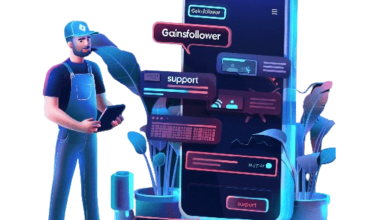All You Should Know About a Mobile App as Future Product Owner

Mobile application development is becoming more and more popular among company owners worldwide as a result of the explosive growth of smartphones and tablets. However, what is a mobile application exactly? What are the advantages it offers companies? And how does one go about creating a mobile application?
A custom app design firm specializes in creating tailor-made applications that align with a brand’s unique vision, combining user-centric interfaces with functional design to deliver engaging and personalized digital experiences.
A mobile application: what is it?
An program that is made to operate on a mobile device—such as a smartphone or tablet computer—is referred to as a mobile application. Apps manage to provide consumers high-quality services and experiences even though they are often little software packages with restricted functionality.
Mobile apps depart from integrated software systems, in contrast to desktop computer applications. Rather, every mobile application offers a distinct and constrained set of features. It might be a mobile web browser, a game, or a calculator, for instance.
Mobile applications avoided multi-functionality due to the early mobile devices’ low hardware resources. However, mobile applications continue to have limited functionality even with today’s far more advanced handsets. This is how owners of mobile apps let users choose precisely what features they want on their devices.
Important technology for developing mobile apps
To make it simpler to comprehend how to create a mobile application, let’s examine the many technological aspects. Both the technology used to create mobile applications and the solutions that enable other apps to function properly on mobile devices fall under this category.
Development of native apps:
Native applications employ specialized coding languages that are ideal for each system and are created exclusively for mobile devices. They are designed to work with a certain phone or operating system, such as iOS for iPhones or Android for other smartphones, which is why we call them “native.” They function really well by using every feature the phone has to offer, including the camera and speed. They look the finest and function the best when compared to other types of applications, and you can install them directly on your phone.
Examples of technologies are Kotlin (for Android) and Swift (for iOS).
Features include the greatest user experience, high performance, and complete access to the device’s capabilities. Because each platform has its own codebase, the primary disadvantage is increased development and maintenance expenses.
Development of web applications
Web apps are webpages that function and seem like applications on your computer or phone, even though they aren’t often referred to as “mobile apps” in the classic sense. To open them, you require a browser such as Chrome or Safari. From large PCs to tiny phones, they adapt to every screen size. They need the least amount of device memory since you don’t download them from app stores. However, they may not function as effectively or make use of your phone’s capabilities as well as installed applications.
Examples of technology include HTML, CSS, and JavaScript.
functions: Easy to maintain, runs in web browsers, requires no installation, but performs poorer than native applications and has restricted access to device functions. The primary drawback is that it requires a powerful internet connection. There are fewer API choices available to developers, mostly for standard services like geolocation.
Development of hybrid applications
Web applications and standard mobile apps are combined in hybrid apps. They can be downloaded from app stores since they are created using web technologies, similar to webpages, but housed in a mobile app shell. They can use your camera and send you alerts, among other things that standard applications can do. They are a compromise; they are superior than web applications but not quite as good as standard apps.
Examples of technologies include Cordova, Ionic, React Native, and Flutter.
Features: Updates are made easier and maintenance expenses are decreased with rapid and straightforward development using a single codebase across all platforms. APIs are available to developers for features like geolocation and gyroscope. Hybrid programs, however, could have performance problems and operate more slowly. Additionally, their look may change depending on the device.
When considering what is the best currency converter app, evaluate for one that offers real-time exchange rates, out of the way functionality, and a user-friendly interface to ensure accurate and comfortable currency conversions on the go.
Development of cross-platform applications
Unlike native app development, which prescribes different codes for each platform, cross-platform app development countenances developers to build mobile applications for iOS and Android making use of a single code base. Because it saves money, time, and determination, this strategy appeals to companies looking to expand their user base. Additionally, it offers a uniform experience across platforms and devices, which increases the efficiency of app development.
Examples of technologies include Kotlin Multiplatform, Flutter, Ionic, and React Native.
Capabilities: enables development using a single codebase across many platforms; performs more like native applications than hybrid ones; provides access to device capabilities via native code or plugins; and is becoming more and more popular as a result of striking a balance between development efficiency and performance.
PWAs, or progressive web applications
PWAs are web applications that have a more familiar feel. You may add an icon to your home screen, utilize it offline, and get alerts. By operating in a browser and functioning as a standard app, they aim to provide you with the finest features of both online and mobile applications.
Examples of technology include web app manifests and service workers.
Features: A kind of web application that can be used on any platform that has a browser that complies with standards, such as desktop and mobile devices. It offers features like push notifications, offline accessibility, and device hardware access, and its goal is to give users an experience that is comparable to native apps.
Apps that are rendered server-side (SSR)
SSR prepares the page on a server before it reaches your computer or phone, making web applications speedier and more search engine friendly. It’s a method for improving online applications, particularly for mobile consumers, rather than a specific kind of app.
Examples of technologies are Nuxt.js (for Vue.js) and Next.js (for React).
App development requires all of these kinds. Depending on what the app is meant to perform, who will use it, and the budget, they meet various demands. It’s not only the technology that makes an app “mobile,” but also how effectively it functions on mobile devices.
An application development consultancy provides expert guidance on designing and building software solutions, offering strategic insights and technical expertise to ensure efficient development and alignment with business goals.
Mobile application types
There are many different types of mobile apps. To help you comprehend the current trends in the mobile world, below are the most popular categories of mobile applications.
Shopping applications: It’s easy to shop from your phone using apps like Amazon and eBay. With simple browsing and safe payment methods, they put the whole shopping experience at your fingertips. The main goal of mobile shopping applications is to enable simple, anytime, anywhere shopping. Find out more about the definition and categories of mobile commerce.
88% of customers have at least one shopping app loaded, and an astounding 60% of consumers prefer mobile apps over websites on their phones because they provide a better user experience. Notably, Gen Z and millennials choose mobile applications as their preferred method of making internet purchases.
With around 338 million downloads from the Apple App Store and Google Play, Temu, a Chinese online marketplace, was the most downloaded shopping app worldwide in 2023. With almost 262 million downloads, SHEIN, its primary rival, took second place.
Music applications: Use apps like Apple Music and Spotify to turn your smartphone into a personal jukebox. Large music collections, customized playlists, and even podcasts are available via these applications. Music applications allow you to listen to your favorite songs while on the road, regardless of whether you like the newest songs or timeless oldies.
According to the report, 64% of music streamers use PCs, tablets, and smartphones, and 50% of those between the ages of 16 and 24 stream music on their phones.
Apps for productivity or business: These are similar to carrying around a personal assistant. They assist you with everything from emailing to planning your day. You can stay in touch with your team and work efficiently while on the move using apps like Microsoft Office, Slack, and Asana.
The global productivity app market was estimated to be worth $9,420.35 million in 2022 and is expected to expand at a 9.2% annual pace. It is anticipated to be worth $15,971.55 million by 2028.
Mobile applications that assist users in learning new skills and information fall under the genre of educational apps. For instance, since they provide users the freedom they need in their learning, language learning applications such as Duolingo have grown immensely popular. Apps for educational games are a great resource for children. Numerous educational applications are also well-liked by educators, who use them to better plan their lessons or advance their own knowledge.
We hardly even recognize that we’re utilizing utility applications since they are so evident. In actuality, utility applications often have the shortest user session durations since users use them to complete tasks before moving on. Trackers, barcode scanners, and healthcare apps are the most often used categories of utility applications.
With a predicted compound annual growth rate (CAGR) of 7.5% from 2022 to 2028, the worldwide utilities app market was valued at $4.7 billion in 2021. Businesses from a variety of industries are driving this rise by using digital technology to improve operations, underscoring the rising importance of utility applications due to their ease and commercial utility.
Travel applications: These apps simplify the process of traveling. They transform your tablet or phone into a journal and guide that provides you with all the information you need about the locations you visit. The majority of modern visitors are tech-savvy and use applications to enhance their trip experience.
Imagine traveling without Uber, Airbnb, or Google Maps!
Revenues from travel apps reached $556 billion last year, up 53.4% from the year before. Of online travel providers, Booking made the most money. In 2022, there were more than 800 million users of travel applications, with Expedia leading the US market with a 21.5% share and Booking having the most downloads (more than 80 million).
Statistics for mobile apps
Here are the most significant data that illustrate the present and future of the mobile environment to offer you a more comprehensive picture of the mobile app market today.
Between 2024 and 2029, the number of smartphone users worldwide is expected to increase consistently by 1.5 billion, or 30.6%. It is projected that there will be 6.4 billion smartphone users worldwide by 2029. (Reference)
What is the creation of mobile apps?
The process of creating mobile apps is heavily influenced by conventional software development. But its main goal is to develop software that capitalizes on the special qualities of mobile phones.
Importing a desktop program to a mobile device is the simplest situation for developing a mobile application. But when the software becomes more reliable, this method can start to cause issues.
Creating exclusively for the mobile environment is a preferable strategy. This method makes use of every advantage that mobile devices provide. The procedure helps company owners strike a balance between cost and usefulness while accounting for their restrictions.
Applications that employ location-based features, like maps, for instance, are always designed with mobile devices in mind.
How can a mobile application be made?
There are essentially three methods available to you if you want to create a mobile application:
Create a development team inside the company,
Employ a specialist software development firm,
Depend on independent contractors’ experience.
To assist you in choosing the right course of action for your mobile development project, below is a brief summary of each choice along with its advantages and disadvantages.
Putting together a development team internally
You have total control over your project when you decide to assemble your own mobile app team. Whether the app is for Windows Mobile, the Google Play Store, or the Apple App Store, you may customize its functionality, appearance, and feel to your liking. But taking this approach costs a lot of money since you have to hire developers, acquire software, and buy the proper equipment. The expenses might be quite significant, particularly if you live in an area where it is costly to hire technical expertise.
Employing independent contractors
It is less expensive to use independent contractors to develop mobile applications. This decision may facilitate the app’s development and enhance your ability to interact and complete tasks efficiently. At Linkitsoft, Finding a freelancer who is trustworthy and skilled in all areas you need, including frontend and backend development, is the challenging part. Freelancers may save you money, but they also run the danger of not meeting your project’s needs, particularly if they aren’t a great fit.





